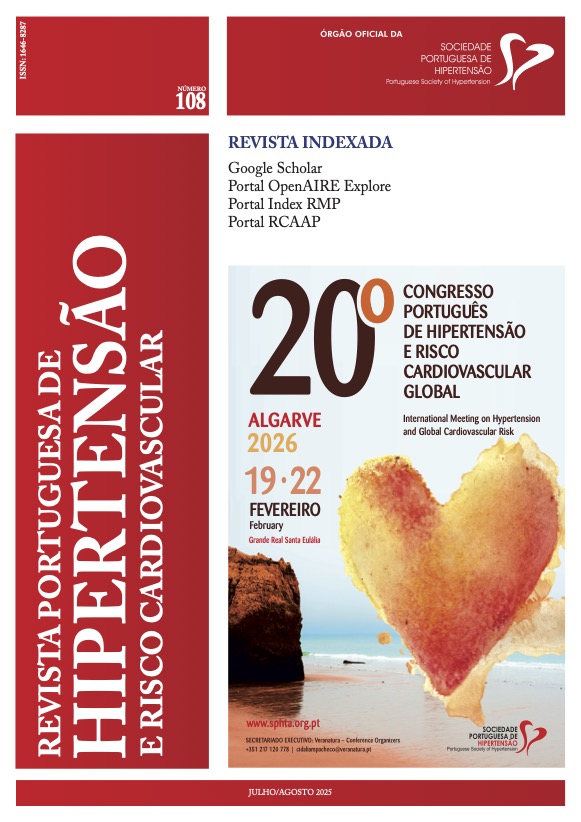BEHIND ELEVATED BLOOD PRESSURE...
DOI:
https://doi.org/10.58043/rphrc.140Keywords:
hypertension, valvular heart diseaseAbstract
Introduction: When hypertension is suspected in young adults, an appropriate clinical, laboratory and imaging investigation should be carried out in order to exclude secondary causes.Clinical case: A 39-year-old male patient attended a consultation due to recurrent episodes of elevated blood pressure in an outpatient setting, with a few months of progression. He had visited the emergency department 2 days earlier due to nonspecific chest pain, without criteria for acute myocardial infarction. During the appointment, he was asymptomatic. His medical history included obesity and previous smoking habits. He was not taking any regular medication. On physical examination at the office, he had a blood pressure reading of 154/63 mmHg and a heart rate of 62 bpm. Cardiac auscultation revealed a diastolic murmur. At the follow-up consultation, a 12-lead electrocardiogram showed left ventricular hypertrophy, and a transthoracic echocardiogram demonstrated a deformed aortic valve, functionally bicuspid, without stenosis, but with severe insufficiency. Given these results, the patient was referred to a cardiology consultation, where he underwent a transesophageal echocardiogram and a coronary computed tomography angiography for surgical planning. He subsequently underwent an aortic valve replacement with a St. Jude Regent mechanical valve. He is currently being followed by his family doctor, with stabilized blood pressure and cardiovascular risk factors controlled by pharmacological therapy.
Conclusion: Although hypertension was an epiphenomenon in this case, its correct approach in primary health care allowed the early diagnosis and timely intervention of a condition that could lead to the development of potentially fatal complications.
Downloads
References
- Noilhan C, Barigou M, Bieler L, Amar J, Chamontin B, Bouhanick B. Causes of secondary hypertension in the young population: A monocentric study. Ann Cardiol Angeiol (Paris). 2016;65(3):159-164. doi:10.1016/j.ancard.2016.04.016
- McEvoy JW, McCarthy CP, Bruno RM, et al. 2024 ESC Guidelines for the management of elevated blood pressure and hypertension. Eur Heart J. 2024;45(38):3912-4018. doi:10.1093/eurheartj/ehae178
- Vahanian A, Beyersdorf F, Praz F, et al. 2021 ESC/EACTS Guidelines for the management of valvular heart disease. Eur Heart J. 2022;43(7):561-632. doi:10.1093/eurheartj/ehab395
Downloads
Published
How to Cite
Issue
Section
License
Copyright (c) 2025 Andreia Gi, Susana Mendonça, Sofia Amado Ferreira, António Gonçalves

This work is licensed under a Creative Commons Attribution 4.0 International License.




